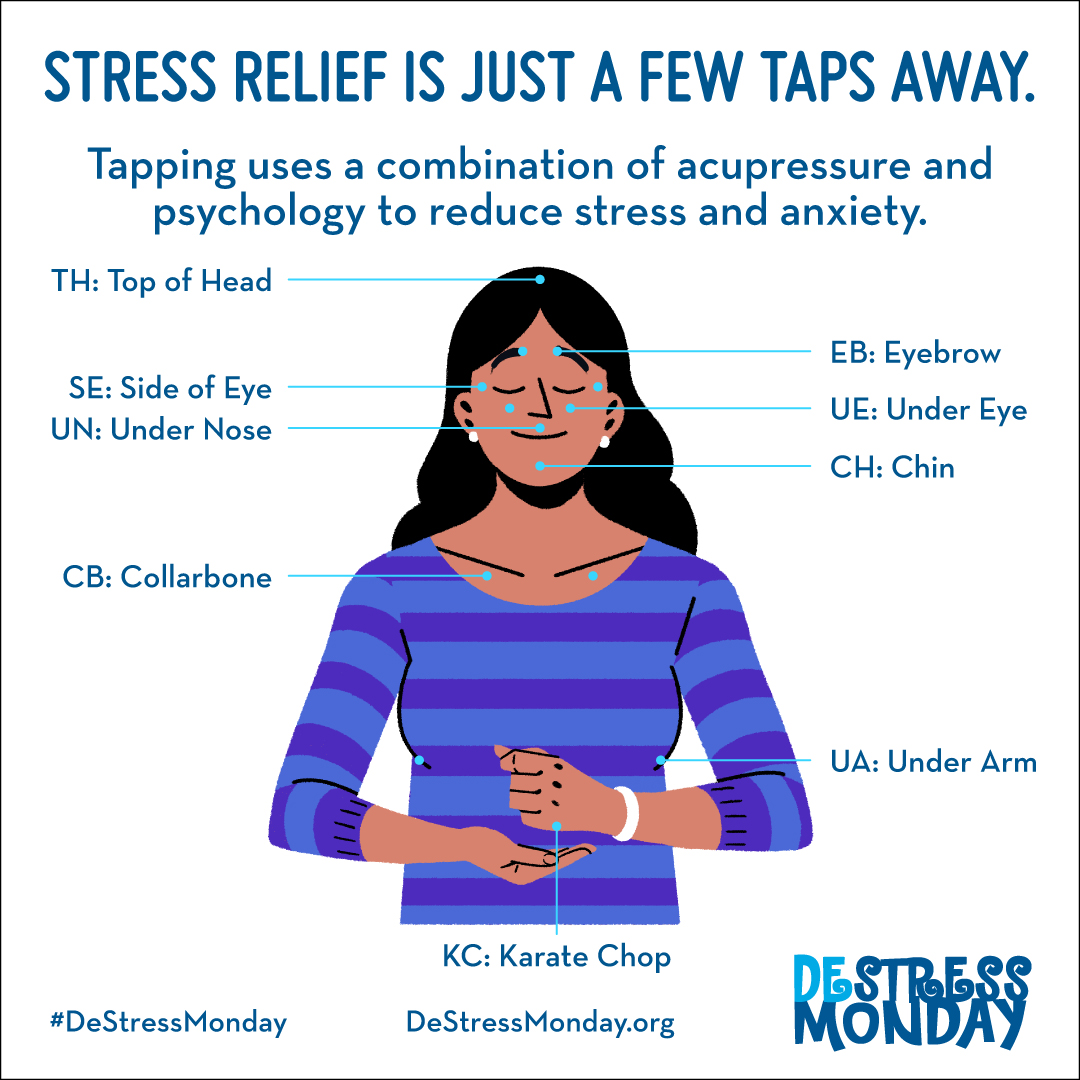Tap Your Way to Reduced Stress and Anxiety
You’re only a few taps away from relieving your stress and anxiety. Tapping, also known as EFT (Emotional Freedom Technique), is a holistic healing technique that is used to remedy a range of issues including pain, addiction, and weight management.
Tapping therapy marries the principles of Chinese acupressure and modern psychology to focus negative emotions and physical sensations on specific parts of the body in order to calm the nervous system and restore the body’s balance of energy.
And although there’s a limited amount of peer-reviewed research published on the subject, a handful of studies show preliminary evidence that tapping can be used as a simple, quick and effective tool to calm anxiety and reduce stress.
According to thetappingsolution.com, the scientific basis for tapping therapy revolves around the amygdala, a part of the brain that is the source of emotions and long-term memory. The amygdala is also known as the brain’s fear center, from which the “flight or fight” response originates. This mechanism is useful when facing with an actual threat, but it can also lead to fears unrelated to survival such as a fear of public speaking or failure. Tapping is believed to subdue the amygdala and reduce the body’s natural response to stress.
To successfully integrate tapping into your Monday wellness routine, first identify and focus on a particular negative emotion, whether it be a fear, a worry or a traumatic experience or memory. While maintaining your mental focus on this issue, use your fingertips to tap 5-7 times on each of the 9 specific meridian points of the body: side of the hand, eyebrow, side of eye, under eye, under nose, chin, collar bone, under arm (arm pit), and top of head. As you tap, repeat a simple phrase to remind yourself of the negative emotion you’re looking to eliminate such as, “my anxiety” or “my pain.”
There’s a lot of information available online to further your understanding of the tapping process. Learn more about tapping here, and see how the technique can be used to help you reduce anxiety and strife.
